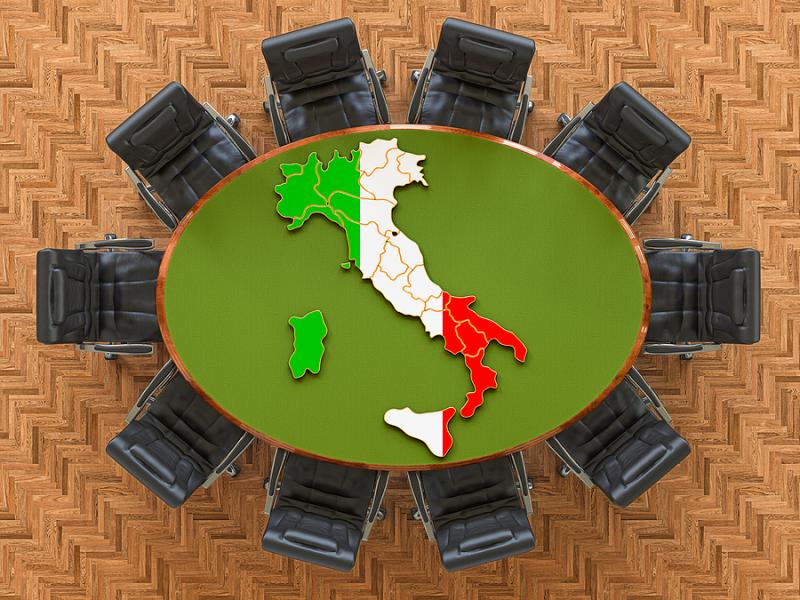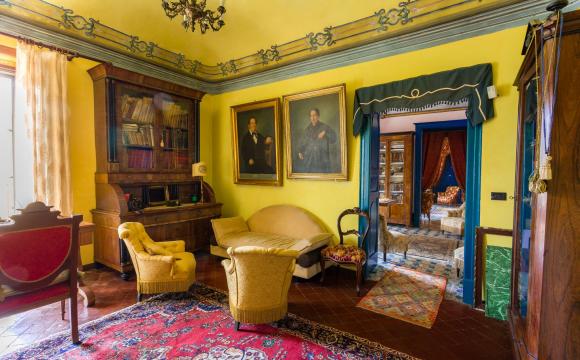It’s Friday, so it must be time for a new government in Italy.
That may be a bit of an exaggeration, but Italy has had more than 60 changes of government (il governo) since the end of World War II - an average of just over a year per administration - so politics (la politica) are always front and center in Italian news.
Indeed, in this time of general economic and social upheaval, Italy is making headlines across the globe as it teeters on the brink of a surprise general election (le elezioni) this month after the one-two punch of a successful vote of confidence (il voto di fiducia) for the Prime Minister (il primo ministro) Conte followed by his surprise resignation (le dimissioni).
With dozens of political parties (i partiti politici), alliances that endlessly ebb and flow, and major players who stick around for decades and often change their affiliation various times over the course of their long careers, it can be a challenge to make sense of Italy’s political landscape. But if you are a true Italophile, dipping your toe into the chaos that is Italian politics offers a unique perspective on modern Italy like nothing else.
Here are a few of the terms and phrases you need to know to follow “la politica italiana”!
Italy’s political system
Italy, officially named La Repubblica Italiana, is a democratic republic with three branches of government and a president (il Presidente). Though the president is chosen by the parliament (il parlamento) plus regional representatives and has a number of key duties, the role is much less actively political than that of the US president. Instead, the Prime Minister (il Primo Ministro) wields most of the executive power along with the cabinet called the Council of Ministers (il Consiglio dei Ministri).
The legislative power is represented by the houses of parliament: the Lower House or Chamber of Deputies (la Camera dei Deputati) with members known as deputati and the Upper House or Senate (il Senato della Repubblica) with members known as senatori. These representatives are elected by a hybrid system in which some seats (seggi) are allocated proportionally (il sistema proporzionale) and others based on a first-past-the-post system (uninominale secco).
When Italian’s refer to “il governo”, they are generally talking about the executive leadership, specifically the Primo Ministro and Consiglio dei Ministri. And a governmental crisis (crisi del governo)? Let’s take a closer look:
Italy’s Fragile Governments
One of the most important roles of Italy’s president is appointing the Primo Ministro (who then goes on to choose ministers to form the cabinet). Generally, the president appoints the leader of the majority coalition (la coalizione di maggioranza, called simply “la maggioranza” by most Italians) that won the election.
Italy’s political system is populated with literally dozens of parties that stretch across the ideological spectrum from far left (l’estrema sinistra) and center left (il centrosinistra) to center right (il centrodestra) to far right (l’estrema destra), leaving none of them with enough electoral power to gain the majority of seats in parliament. (Though, fortunately, there is an election threshold (soglia di sbarramento) that sets a minimum share of the vote every party and coalition must achieve in order to get any seats.)
Thus, in a frenzy of backroom bargaining and selling of souls, large and small parties (i partiti minori) band together in coalitions in the hopes of summing enough votes to be able to lay claim to the nomination of the prime minister and cabinet.
The problem, unfortunately, is that these alliances (le alleanze) are inherently fragile and subject to micro-parties pulling their votes when things don’t go their way, thus pushing the coalition’s numbers down and sparking a vote of confidence to verify if they have dipped below the majority cut off. If they have, then it’s time to change the government (again).
When the parliament isn’t able to come to some sort of agreement about naming a prime minister (il parlamento sospeso, or hung parliament), the president can step in and name a prime minister to form a technocratic government (il governo tecnico). On the flip side, a national unity government (la grande coalizione) government with the support of all the main parties in parliament is sometimes formed during times of political or economic crisis.
Following Italian politics
The biggest party players in Italy right now are the center-left Partito Democratico, center-right Forza Italia, far-right Lega Nord and Fratelli d’Italia, and il Movimento Cinque Stelle (M5S), which has alternately allied itself with the center-right and center-left.
Here are some of the terms you should be familiar with to follow Italian politics.
Andare alle urne - hold elections
Le urne - ballot boxes
La scheda elettorale - ballot
I sondaggi - Opinion polls
Gli exit polls - Exit polls
Le poltrone - Ministerial or other important government roles
Ribaltone - When a political party changes coalition to turn over the government
Trasformismo - A politician who changes political affiliation













